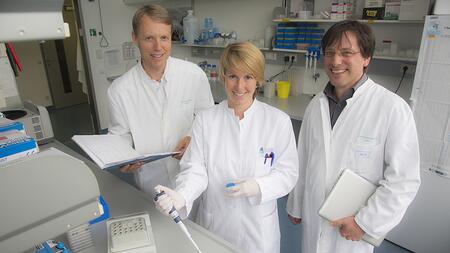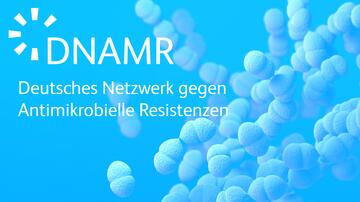Identifying viruses and defending against them
Many viruses store their hereditary information in ribonucleic acid, RNA for short. Viral RNA is very similar to that of humans. However, the human immune system can differentiate between viral genetic information and its own RNA, and is hence able to defend itself against viruses. Researchers from the University Hospital Bonn and the German Center for Infection Research have now found out how this works. The study is published in the renowned journal “Immunity”.
"The top end of human RNA is marked with a specific chemical structure, a N1-2’O-methylated group,” explains Professor Gunther Hartmann, Director of the Institute of Clinical Chemistry and Clinical Pharmacology of the University of Bonn. Viruses do not have this structure in their hereditary information. Researchers discovered that the body’s innate immune system uses this structure to differentiate its own RNA from others. An RNA receptor in the cells is responsible for this recognition mechanism: similar to how a face is checked at airport passport controls, RIG-I checks the top end of the RNA. If the structure is present, the immune system remains ‘still’, and if it is not present, it is alerted.
“We have now been able to show that the structure inhibits the correct binding of RNA to RIG-I,” explains Dr Martin Schlee, head of the research group at the Institute of Clinical Chemistry and Clinical Pharmacology. “Hence, the body’s own RNA cannot activate RIG-I—in contrast to viral RNA which docks onto RIG-I and triggers an immune response.” During this immune response many antiviral mechanisms are activated. Additionally, neighbouring cells are alerted and immune cells are recruited which, similar to the effect of a vaccination, initiate the development of immunological memory.
However, some viruses succeed in undermining this immunological mechanism. For example, the yellow fever virus camouflages itself by adding a N1-2’O methylated group into its RNA, hence cheating its way through ‘passport controls’. The researchers now hope to use this knowledge to develop new drugs that target this camouflaging mechanism.
Press Release Uniklinikum Bonn.




